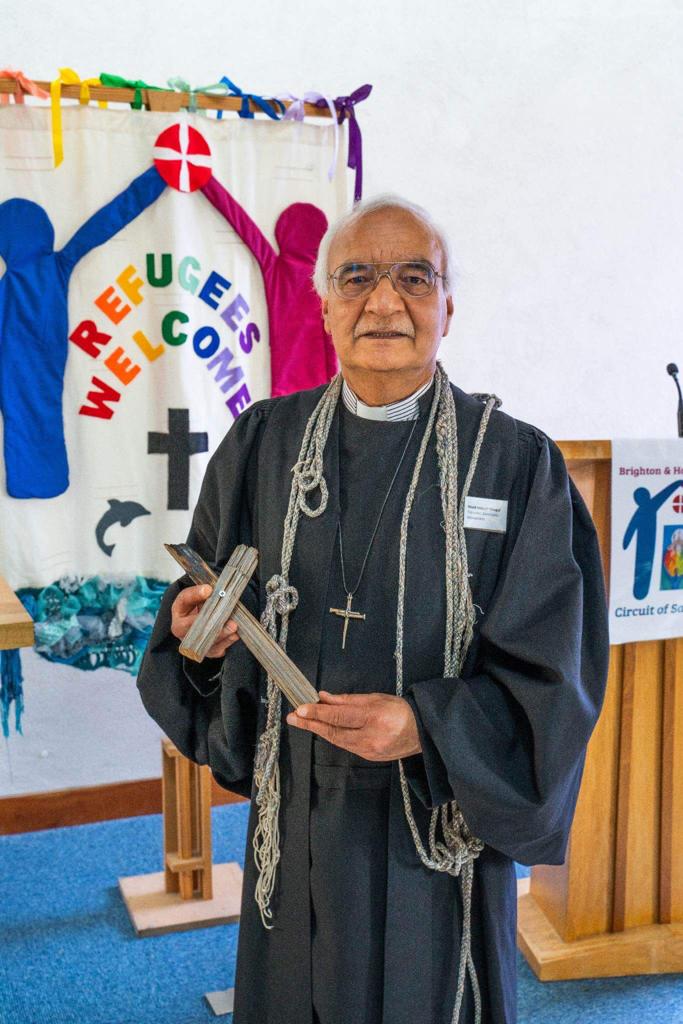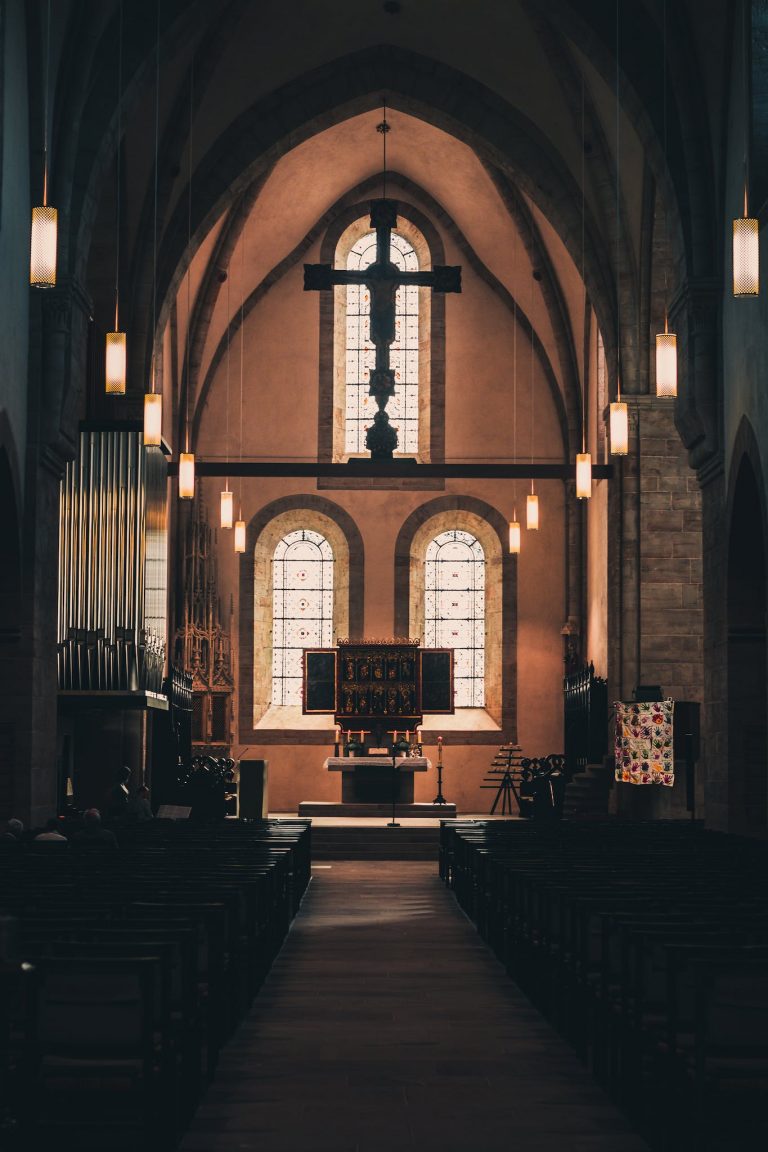The term “Asylum Seeker” should be dropped. Don’t use it. I argued this in an article for the Methodist Recorder in April 2001. It is better to recognise instead that there are people seeking or taking Sanctuary. There is an urgent need for a new and alternative vocabulary in the whole Immigration debate which will again become a hot topic in the weeks leading up to the General Election.
The term asylum has a historical use and connotation. It has been used to refer to institutions giving shelter and support to people suffering from mental illness who were considered to be a threat to society. Such places, where people were placed and forgotten about, belong to a bygone era. Such a use of the term is discontinued. It smacks of degradation and indignity. Why use such a term to refer to people desperate for the protection of their lives?
“Asylum Seeker” is a term that has come to be synonymous with economic or illegal immigrants, benefit cheats and criminality, rather than as referring to people seeking safety from persecution and torture.
I welcome the report by The Independent Asylum Commission [March 2008] which uses the term “those seeking sanctuary” to refer to those fleeing persecution and looking for protection.
The law should safeguard human rights and provide protection for the most vulnerable. Alongside the law, there is a moral and spiritual obligation on us all to provide sanctuary for those whose lives are in danger. There are sanctuaries for Donkeys, Seals, Whales, and so on. Why not Sanctuary for human beings?
On 18th June 2007, during Refugee Week, the Lord Mayor of Sheffield pronounced from the steps of the City Town Hall that Sheffield City Council had declared support for Sheffield as a City of Sanctuary.
When I first shared the idea of Sheffield as a City of Sanctuary at a meeting in September 2005, I expected us to work four or five years to realise our objective. But after just two years we’d become a national movement and had the support the Refugee Council. We have held two national conferences in Sheffield. The idea of Sanctuary is catching the imagination of people.
I want to share the story of our achievement.
The objective of the City of Sanctuary movement in Sheffield is to create a culture of welcome and hospitality for those seeking sanctuary, Refugees and other vulnerable migrants among us.
This work is urgent and important in our times of open hostility and hatred towards people who come here seeking protection and security – fleeing the torture of persecution or poverty.
I came to UK with my family as a refugee in 1964.
Over the last 40 years I have observed, and often challenged oppressive developments in our Immigration and Asylum laws and procedures.
About 30 years ago, I became part of a movement of churchy and not so churchy people to challenge these developments by protesting against unjust deportations. Sometimes this protest involved people taking sanctuary in Churches or Mosques…..not to avoid or evade law but to challenge it publicly, and to seek a response from Government. For a while [in the mid 1980’s] I chaired the Sanctuary Working Group of the British Council of Churches’ Committee for Race Relations. We prepared guidelines for Churches on the whole theme of Sanctuary.
I have especially continued to seek a fair deal for “Asylum Seekers”. In 1997 I walked all the way from the steps of Sheffield Town Hall to 10 Downing Street with a letter to the Prime Minister asking that “Asylum Seekers” should not be detained in conventional prisons as they are not criminals.
As President of the British Methodist Conference [2000 – 2001], I visited the UK’s largest Detention Centres [such as Rochester Prison, Campsfield, Haslar, Tinsley, Harmondsworth, Lindholme and Maghaberry Prison in Lisburn, Northern Ireland]. I shared what I observed in articles for the Methodist Recorder [12th April 2001 and 26th April 2001] and also in a Book entitled “Unlocking the Doors” [Penistone Publications 2001].
What I saw and heard strengthened my resolve to seek the welfare of Asylum Seekers.
The roots of Sanctuary are thousands of years old, and have their basis in such diverse cultures as ancient Egyptian, Hebrew and Greek. The Hebrew tradition enshrined the taking of sanctuary into the legal code of their new society when six Cities of Refuge were established according to the legislation set out in the Book of Numbers 35:6-34 [see also Joshua 20:1-9; Deuteronomy 4:41-43]. These Cities were able to give refuge to anyone, including a foreigner, who was accused of manslaughter, thus preventing the automatic use of revenge as a rough, ready and indiscriminately unfair route to justice, “until there is a trial before the congregation” [Numbers 35:12]. The sole purpose of the Cities of Refuge in the Hebrew tradition was the prevention of revenge, not the avoidance of law. The Rabbinic teaching is that roads leading to these Cities were to be kept in good repair, with clear finger posts, so that a refugee may be free to escape the hands of the avenger of blood and find safety.
The Hebrew tradition provided the basis for the incorporation of Sanctuary into the life of Western European society through its adoption by the Christian Church. Christian Sanctuaries, in early Church history, were for fugitive slaves. In Britain, the first Christian martyr, St Alban, was canonised because he was martyred for giving Sanctuary to a fleeing person. With the transition of the Church from a persecuted sect into an officially recognised and promoted religion, Sanctuary became legally recognised, although always subject to certain restrictions, and often caught in the tension between the competing claims of Church and State over the boundaries of their spheres of authority.
The earliest mention of Sanctuary in England was in a code of laws issued by King Ethelbert in the year 600AD. Under Norman rule, there were 2 kinds of Sanctuary:
– a general right to Sanctuary which belonged to every church;
– a particular right to Sanctuary which was granted to some cities by Royal Charter.
The general sanctuary offered protection to those who were guilty of capital felonies.
The sanctuaries of royal charter offered greater safety and were available in at least twenty two churches, including, Battle, Beverley, Colchester, Durham, Hexham, Norwich, Ripon, Southampton, Wells, Winchester, Westminster and York. They offered protection to debtors and criminals.
The right of sanctuary was to be confined to the designated church, the limits being extended to the precincts, and in some cases even to a larger area. For example at Beverley and Hexham, the boundaries of sanctuary covered the area within a radius of a mile from the church. The boundaries were marked by “sanctuary crosses”, some of which still remain. In Beverley, sanctuary was given for a month after which the person had to leave. They could return for another month if their life was still in danger, but had to leave after 30 days. If the person returned a third time, sanctuary was given permanently.
In Durham Cathedral those seeking protection held and rattled the Sanctuary Knocker to gain entrance. Upon claiming sanctuary people seeking sanctuary had to acknowledge their crime, and gained refuge for forty days, and had breathing space to assess their situation. They could decide to go through legal processes or leave the country. In the 15th and 16th centuries the monks of Durham kept a record of the occasions when sanctuary was claimed – about six a year. Murder was the most common crime noted. Debt and theft are also mentioned.
There is also a sanctuary knocker at St Gregory’s church, Norwich.
In some churches there was a stone seat within the church, called the “frithstool”, on which it is said a sanctuary seeker had to sit in order to claim protection. There is a sanctuary seat in Beverley Minster and Sprotborough Parish Church.
There was a strong tradition of sanctuary in the Middle Ages. In his book “From the Thames to the Tamar” the Rev A. G. L’Estrange writes that at Beaulieu Abbey near Southampton, in the year 1539, there were no less than “thirty two sanctuary men for debt, felony and murder”. Ho goes on to state that Beaulieu Abbey was held in reverence, and even the monarch would not violate it: “The greatest criminal or most obnoxious rebel who gained it’s gates and registered himself upon it’s books, was safe from pursuers”.
However, by the time of Reformation, the sanctity of Sanctuary was being discredited. Sanctuaries came to be seen as places of disrepute, and there were moves to curtail them.
The number of Sanctuaries were reduced to seven in the reign of Henry VIII, and in 1623, the general right to Sanctuary was abolished by statute law, although the basis of Sanctuary has always been moral and spiritual. White Friars, London was the last place of sanctuary used in England, but it was abolished by Act of Parliament in 1697.
The concept of Sanctuary re-emerged in the 20th Century, first in El Salvador, as a form of protection from the activities of ‘death squads’. From there it was taken up in the USA when churches sheltered Guatemalans and Salvadorians refused refuge.
In 1982, a Presbyterian Church in Arizona, unwilling to see people sent back to certain detention, became the first Church to offer Sanctuary. Scores more followed, and were joined by synagogues.
There have been sanctuaries for migrants in Germany, Switzerland, Denmark and Sweden as well as in the UK. The best known Sanctuary in UK was that taken by Viraj Mendis in a church in Manchester 1988-89.
Five years ago I began to wonder, could Sheffield become a recognised ‘City of Sanctuary’ for Asylum seekers and refugees? I shared the idea with Craig Barnett and together we began to work on it.
Many people are now familiar with the idea of a ‘Fairtrade City’, in which a wide range of community groups and organisations make a commitment to using and selling fair-trade goods. In a similar way, a ‘City of Sanctuary’, we imagined, would be a place where significant numbers of schools, community groups, faith groups and cultural organisations, as well as local government, were committed to offering hospitality and support to refugees and “asylum-seekers” in their communities.
Many people who support refugees and “asylum-seekers” experience the difficulty of constantly reacting to ever-harsher legislation and media coverage. It can be difficult to feel a sense of achievement or progress towards a more hospitable and humane society. Working towards ‘City of Sanctuary’ status for Sheffield we felt would represent a positive common goal and aspiration for a wide variety of organisations, groups and individuals. Just as with a ‘Fairtrade City’, it could embody a set of explicit goals for the number of local organisations that signed up to the initiative, and a commitment to broaden support for the idea in order to gradually influence the culture of the city as a whole.
Sheffield has an excellent record of support for asylum-seekers and refugees, and a diverse and thriving multicultural population. This made it ideally placed to be the first city to adopt the goal of becoming a ‘City of Sanctuary’ for people in need of safety from persecution.
Other cities in the region and beyond are now following the direction with Sheffield leading the way. There are City of Sanctuary working groups in Bradford, Leicester, Nottingham, Coventry, Oxford, London, Bristol, Swansea, Huddersfield, Hull and Wakefield.
Following a meeting on 15th October 2005, to discuss Sanctuary, many Sheffield city organisations adopted the following resolution:
“Our organisation recognises the contribution of asylum seekers and refugees to the City of Sheffield, and is committed to offering hospitality to people who come here in need of safety from persecution. We support the goal of Sheffield becoming a recognised City of Sanctuary for asylum seekers and refugees.”
We called for support from the leader of all of Sheffield’s Faiths, political leaders, community organisations, educational institutions and all people committed to offering hospitality and support to asylum seekers and refugees in our City.
Over 100 organisations have signed up so far, including community organisations, worship centres, Students Unions of both our Universities, a number of businesses, our Faith Leaders from different Faiths, many Worship Centres, and, our City Council that represents different political persuasions. The latest organisation to sign up in support is Sheffield Homes, one of the largest property holders in the City.
On 18th June 2007 Sheffield became UK’s first City of Sanctuary.
The City of Sanctuary Committee, just 8 of us, is consulting with all who support us to develop goals for a City of Sanctuary. With the City Council we have produced a vision that states what a City of Sanctuary looks like and some criteria for becoming a City of Sanctuary.
City of Sanctuary builds on the history of sanctuary. In the contemporary expression of Cities of Refuge, and buildings of sanctuary, the City of Sanctuary moves the idea towards a vision where local communities and organisations work together to counter and challenge hostility, and create a culture of welcome, hospitality and safety for all residents. City of Sanctuary is very much a grassroots movement. It is not a political movement or campaign, and does not seek to evade or avoid the law but to make it publicly accountable.
City of Sanctuary offers a positive vision of a culture of welcome and hospitality for all those in need of safety.
Rev Dr Inderjit Bhogal
Chair, City of Sanctuary
January 2010
————
Bibliography
Methodist Recorder 26th April 2001
Bhogal, I. 2001 Unlocking the Doors. Penistone Publications, Penistone
Independent Commission on Asylum report, 28th March 2008
Barnett, C and Bhogal, I. 2009 Becoming a City of Sanctuary. Plug and Tap, Ripon
L’Estrange, A.G. From The Thames to the Tamar

![Sanctuary For All – Study Guide for Churches and Individuals [2020 Revision]](https://inderjitbhogal.co.uk/wp-content/uploads/2023/05/City-of-Sancturary-Logo.png)


